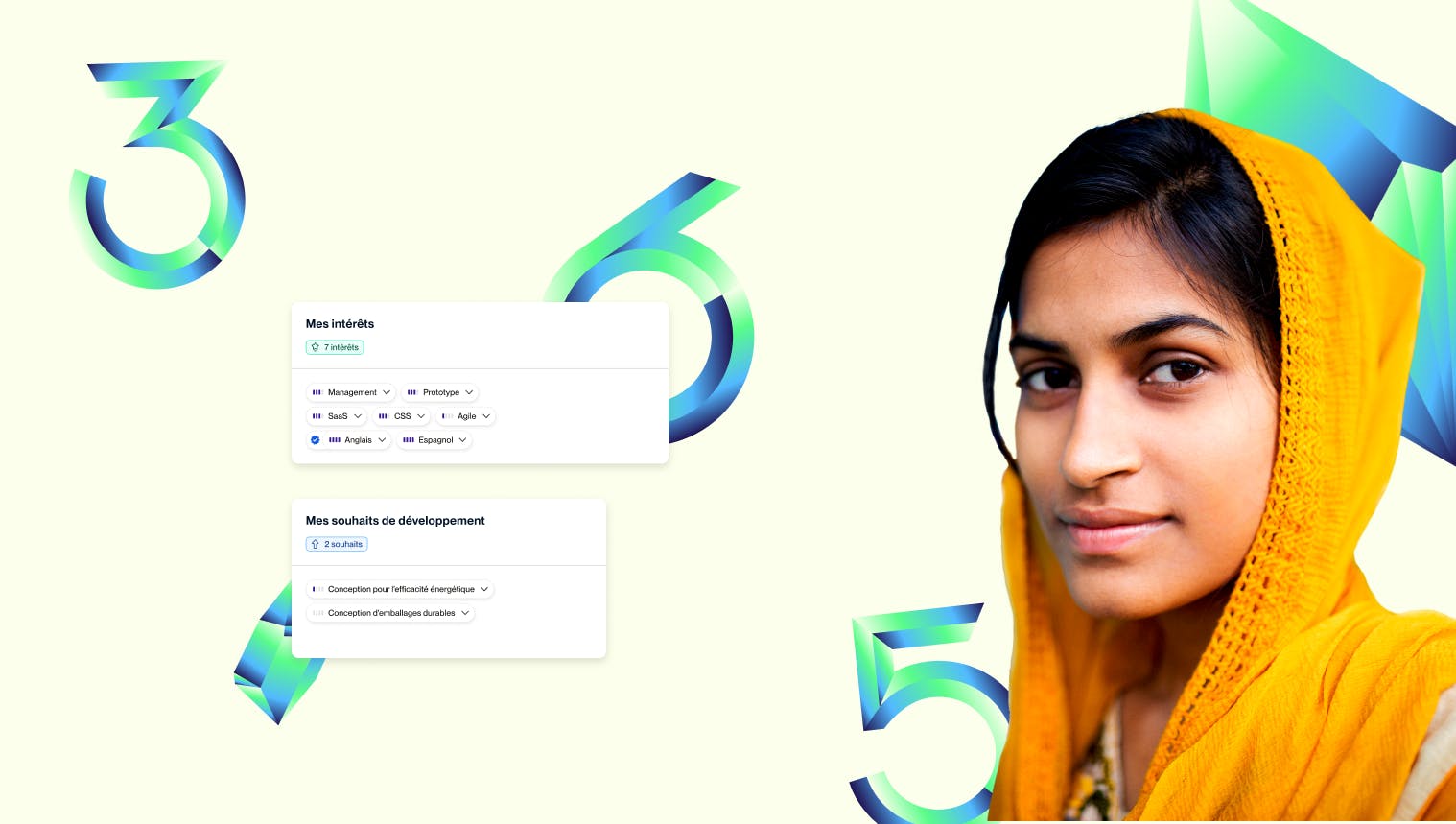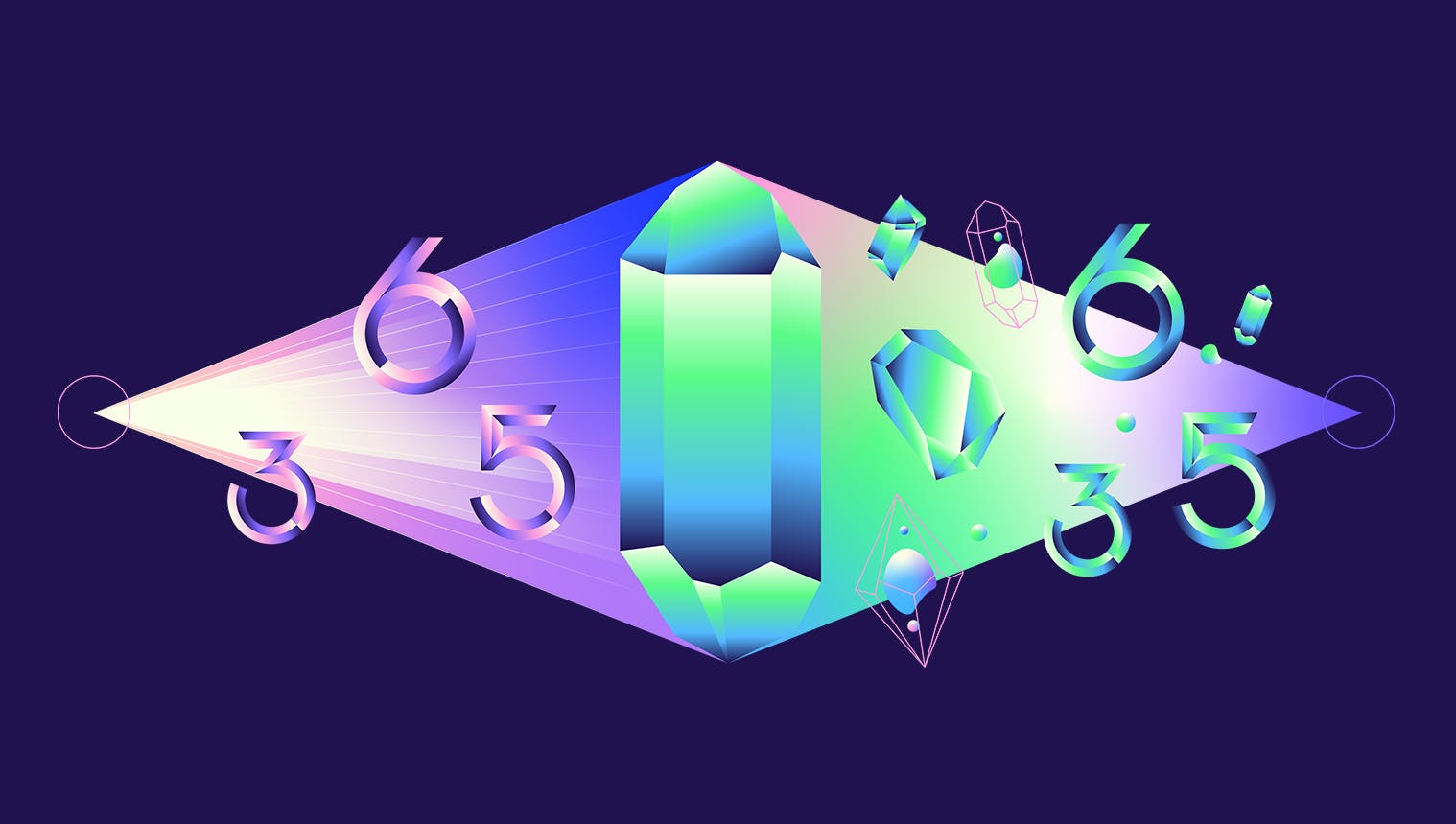How to use ChatGPT in HR?

Just as the spaceship that snatched up Peter Quill in Guardians of the Galaxy transformed the life of the film's main character, Artificial Intelligence (AI) has revolutionized many aspects of the modern world, and human resources is no exception.
The use of cutting-edge technology such as ChatGPT now provides HR professionals with unprecedented opportunities to automate and improve many traditionally manual tasks. It's rather “spatial”, isn't it?
In this article, we'll explore in detail how HR can take advantage of ChatGPT, from application management and employee engagement to continuous trainings. We'll also review examples of how ChatGPT can be used in HR and provide practical advice on how to fully exploit the potential of this innovative technology.
What is Generative AI? What does ChatGPT have to do with it?
A little reminder never hurt nobody: Generative AI refers to a subset of artificial intelligence techniques. These techniques focus on generating new content, such as images, text, audio, and video, based on input data or models learned from training data.
There are many Generative AIs, of which the best known are:
- ChatGPT - Used to generate text in response to user requests.
- Character.ai - Allows interaction with famous characters, real or fictional.
- Google Bard - Google developed a chatbot similar to ChatGPT.
- Poe - Allows you to ask different AIs simultaneous questions.
- QuillBot - Paraphrasing and rephrasing tool.
- PhotoRoom - Transforms photos into professional-quality images.
- CivitAI - Creates unique works of art.
- Midjourney - Generates photorealistic artworks or pictures.
- Hugging Face - Platform for sharing AI models.
- Perplexity AI - A conversational agent that answers questions in natural language.
ChatGPT is a natural language processing model developed by OpenAI. Based on the GPT-4 architecture, it uses generative artificial intelligence to generate consistent, context-sensitive text in response to users' questions or requests.
Here are some of ChatGPT's key features:
Understanding and Text Generation: ChatGPT can understand the context of the conversation and generate relevant answers. It can handle complex questions, offer detailed explanations, and provide recommendations based on the information provided.
Large Knowledge Base: Trained on a vast corpus of textual data, ChatGPT has knowledge covering a wide range of subjects, although its database is limited to information available up to its training date (knowledge cut-off 2023).
Versatility: It can be used for various applications, such as customer service, writing support, language translation, information retrieval, and content creation.
Adaptability: ChatGPT can be integrated into various systems and platforms, enhancing user interaction and automating repetitive tasks.
Customization: Users can adjust parameters to align template responses with their audience's tone, style, and specific needs.








Generative AI, like ChatGPT, can be used in various ways in HR, including personalized learning and training, skills assessment and development, talent acquisition and recruitment, employee engagement and feedback... Read on to learn more about the benefits of Generative AI for HR!
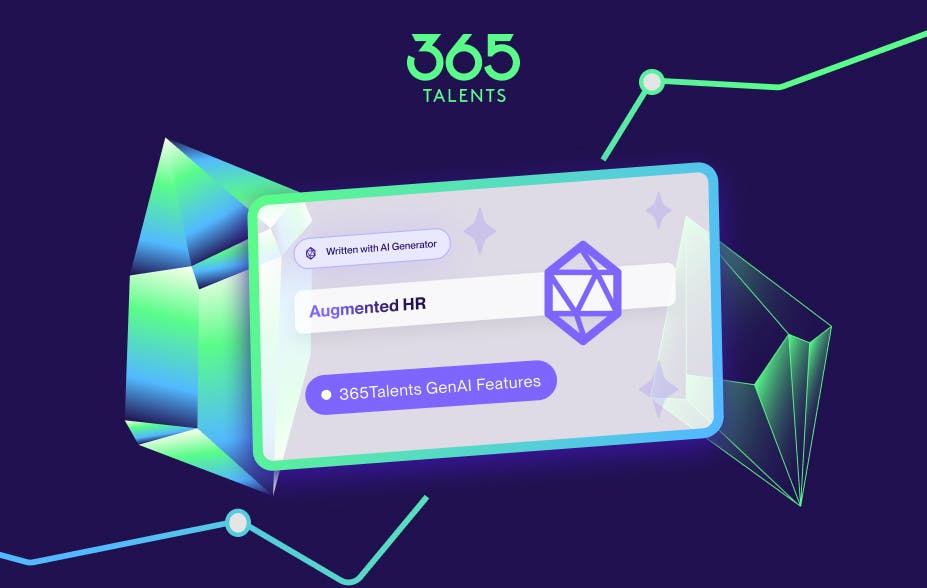
Use cases for ChatGPT in HR
ChatGPT is an innovative human resources tool that automates the drafting of job descriptions, generates interview questions, and provides support for employee management.
Innovation in recruitment
Create dynamic, attractive job descriptions that evolve with market trends.
Innovation in recruitment means using modern tools and approaches to create dynamic job descriptions that attract talent. Based on market trends and employee feedback analysis, job descriptions can be continually updated to reflect the skills and qualities in demand. This proactive approach attracts high-quality candidates and ensures that positions remain competitive and relevant.
Recruitment and talent acquisition
Improve recruitment processes by accurately matching candidates' skills to job requirements.
Using advanced tools to analyze and match candidates' skills with specific job requirements dramatically improves recruitment efficiency. Based on accurate data and sophisticated algorithms, recruiters can identify the most suitable candidates for each role, reducing the time and costs associated with recruitment and ensuring a better cultural and professional fit, thus increasing retention rates.
Employee development
Identify skills gaps and generate customized training programs.
Personal development is crucial to employee growth and satisfaction. By identifying skills gaps, organizations can determine where employees require additional training. Using advanced assessment tools, a detailed profile of existing and missing skills can be drawn up. From this analysis, customized training programs can be generated, precisely targeting individual and organizational needs guaranteeing effective skills development in line with corporate objectives.
Workflow automation
Simplify processes related to skills and human resources management.
Automating human resources workflows simplifies and accelerates routine administrative tasks such as time and attendance, payroll processing, leave management, employee file management, training follow-up, and skills updating. By integrating automated solutions, HR teams can reduce human error, free up time to focus on strategic tasks and improve the overall efficiency of HR operations. This includes using software to automate the planning, monitoring, and management of employee performance.
Increased personalization
Tailor training and job descriptions to the specific needs of employees and the organization.
A personalized approach to human resources can better meet the unique needs of each employee and the organization. By tailoring training programs and job descriptions, companies can ensure that employees acquire the relevant skills and are placed in roles where they can excel. This customization increases employee engagement, contributing to their professional development and the achievement of company objectives.
Employee engagement
Use generative content to develop engaging and interactive training materials.
To maintain a high level of employee engagement, it's essential to offer training materials that are not only informative but also engaging and interactive. The use of generative content, such as interactive simulations, videos, and personalized quizzes, creates immersive learning experiences. These modern methods captivate employees, increase information retention, and encourage active participation in the training process.
Predictive analysis
Anticipate future skills needs and adapt professional development strategies accordingly.
Predictive analytics play a key role in proactive talent management. By using predictive models based on historical data and current trends, organizations can anticipate the skills that will be needed, enabling them to plan and implement appropriate professional development strategies to fill future gaps. By staying ahead of skills needs, companies can maintain their competitiveness and ensure continued growth.
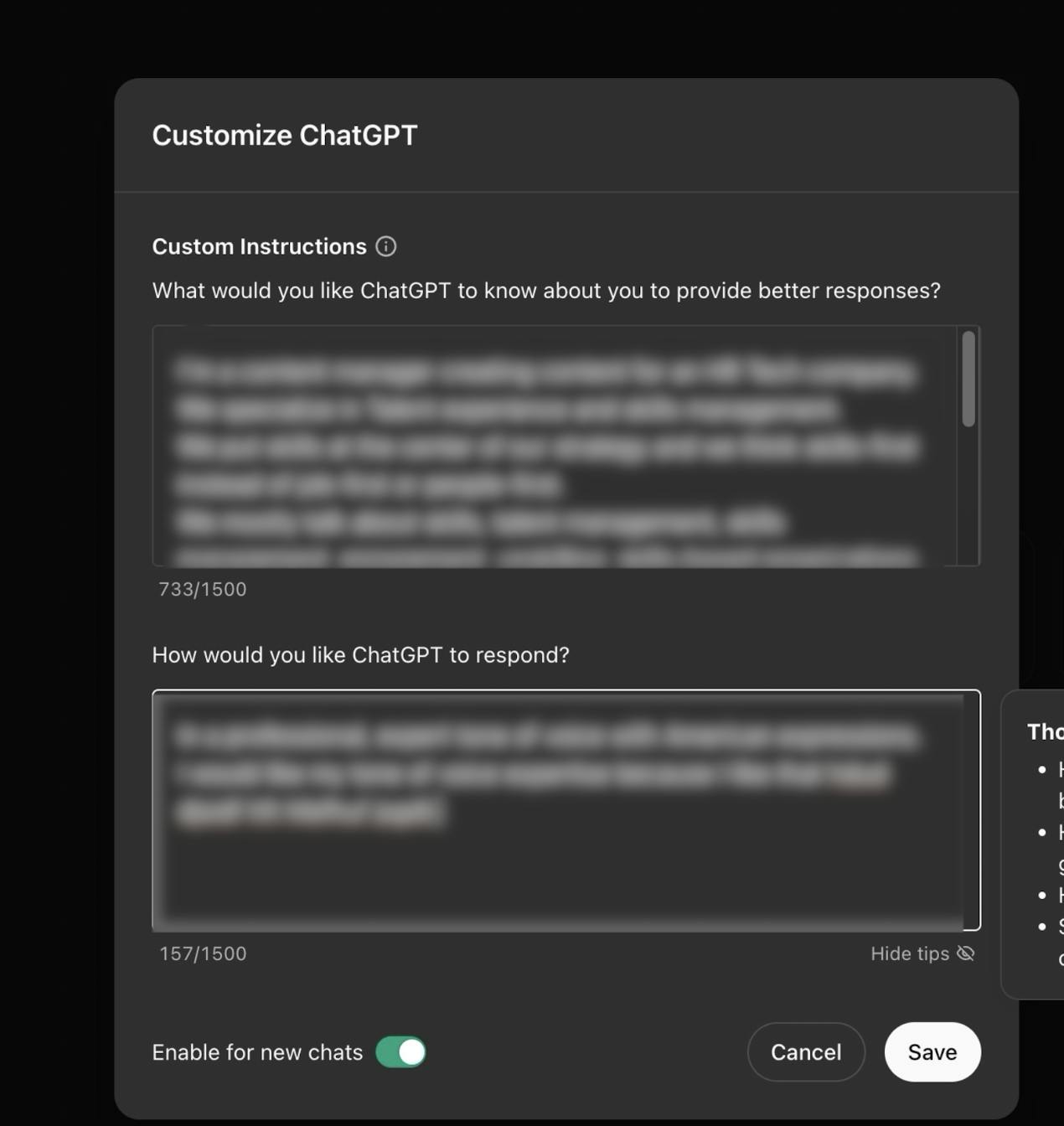
How do I use ChatGPT?
Step 1: Understanding the tool
Understanding ChatGPT's different offerings is essential before you start using it. The tool often offers a free version, which may include basic functionalities with specific limits on the number of queries or task complexity. Paid versions usually offer extended access, higher query limits, faster responses, advanced features essential for complex business applications, and enhanced data security. Depending on your objective and level of use of ChatGPT, you may want to opt for the paid version.
Step 2: Customize your instructions
For the effective use of ChatGPT in HR processes, it's essential to have a thorough understanding of how to formulate instructions that precisely direct AI towards the desired results. Here are some tips for optimizing this interaction:
Customize instructions: Customized instructions are located in the settings section, and help guide ChatGPT to more targeted, contextually appropriate responses.
Be specific: Detailed instructions increase your chances of getting a response that matches your expectations. For example, instead of asking "Proposes training ideas for...", specify "Generates five training courses for an HR manager position."
Contextualize: Provide details about the specific context in which you're working. If you're preparing a training session, include the target audience, learning objectives, and the type of content required.
Adopt a direct style: Use a clear, direct tone for your instructions.
Step 3: Write your prompts well
Generative artificial intelligence, such as ChatGPT, can significantly transform HR functions. Properly formulating queries or prompts is crucial to maximizing the effectiveness of this technology.
There are two types of prompts: open-ended questions, which give the AI a great deal of freedom to answer, and hole prompts, which provide a structured framework guiding the AI towards a specific response.
Open questions help explore ideas or obtain general information, while hole prompts help generate targeted content or specific documents. By understanding and applying both types of prompts, you can use generative AI to optimize your HR processes, ensuring better management and development of your people.
Example of a concrete prompt
"I work as an HR manager and want to develop a continuous training program for management employees. Please suggest a training plan that includes modules on interpersonal communication, conflict resolution, and leadership. I prefer interactive formats and case studies as teaching methods. "
Our ChatGPT prompts for HR: examples and prompts to copy
Each phase of the employee journey presents unique opportunities to integrate artificial intelligence to optimize procedures and exchanges. The ChatGPT prompts implemented are designed to offer customized solutions that precisely target your company's issues and requirements.
5 Examples of good and bad HR prompts
Recruiting
Good Prompt: "Create a job description for a digital project manager that includes team management and budgeting skills."
Bad Prompt: "Make a job description."
Onboarding
Good Prompt: "Creates a detailed onboarding checklist for new employees covering the first two weeks on the job."
Bad Prompt: "Checklist for new employees."
Training and development
Good Prompt: "Develop a 12-month training program to develop strategic leadership skills in young managers in the information technology sector."
Bad Prompt: "Training program for managers."
Employee engagement and retention
Good Prompt: "Proposes a list of 10 non-monetary initiatives to improve employee engagement and retention in a technology company."
Bad Prompt: "Ideas for retaining employees."
5 prompts templates ready to use!
To help you better understand how to personalize your interactions with ChatGPT, here are 5 copy/paste prompts you could use:
- "Create a job description for a [job title] that requires [skill 1], [skill 2] and [skill 3]."
- List [number] interview questions that assess [specific skill] for a [job title].
- "Formulate questions for a skills review [skill 1] [skill 2] [skill 3]: focused on continuous improvement."
- "Develop a workshop on [topic] for [target group], focusing on [specific skill]."
- "Propose [number] of [type of initiatives] to improve [specific objective] among employees of [type of company].



Download our Practical Guide to Generative AI for HR to discover all our prompts!
In this guide, you'll find 20 prompts specially designed to meet various needs across the employee lifecycle, split between open-ended questions and hole-in-the-wall prompts. Each is designed to maximize the efficiency of HR tasks using ChatGPT, helping you navigate efficiently from recruitment to training.

Taking AI and Generative AI one step further
Unfortunately, Generative AI alone is insufficient for maximum optimization of your HR processes and talent management.
Limitations of Generative AI
Accuracy of information: AIs like ChatGPT rely on Internet data that is neither verified nor always up to date, potentially resulting in inaccurate or irrelevant recommendations or data.
Confidentiality and Data Security: Using generative AI for HR can compromise the confidentiality of employee data if sensitive information is mishandled.
Limited customization: Generative AI's adaptability to answer specific questions is limited and requires further development to match internal policies or specific business needs.
Benefits of combining AI and Generative AI
Combining traditional AI with generative AI dramatically improves the efficiency of HR processes. The former excels in analysis and prediction, while the latter brings creative and personalization capabilities.
Creativity: Generative AI enables the production of innovative content, such as career or training recommendations, that is personalized and tailored to the current needs of the job market.
Quality and Accuracy: Thanks to a vast database and learning algorithms, generative AI can improve the accuracy of job descriptions by aligning them with the skills needed.
Productivity and Efficiency: Automating repetitive tasks, such as writing job descriptions or analyzing skills, enables HR to focus on strategic initiatives.
Personalization: Generative AI can create personalized content for users, enhancing their experience.
Data Analysis: AI can analyze large amounts of data to extract relevant information, enabling generative AI to provide detailed reports and highlight key insights. This helps define action plans and make informed decisions, including data-driven predictive analytics.
Business Intelligence: The combination of generative AI and traditional AI enables internal and external analytics to identify critical skills for each role, track market trends in skills and talent management, and maintain a competitive edge.
We detail everything in our latest Generative AI Toolbox. Download it now!
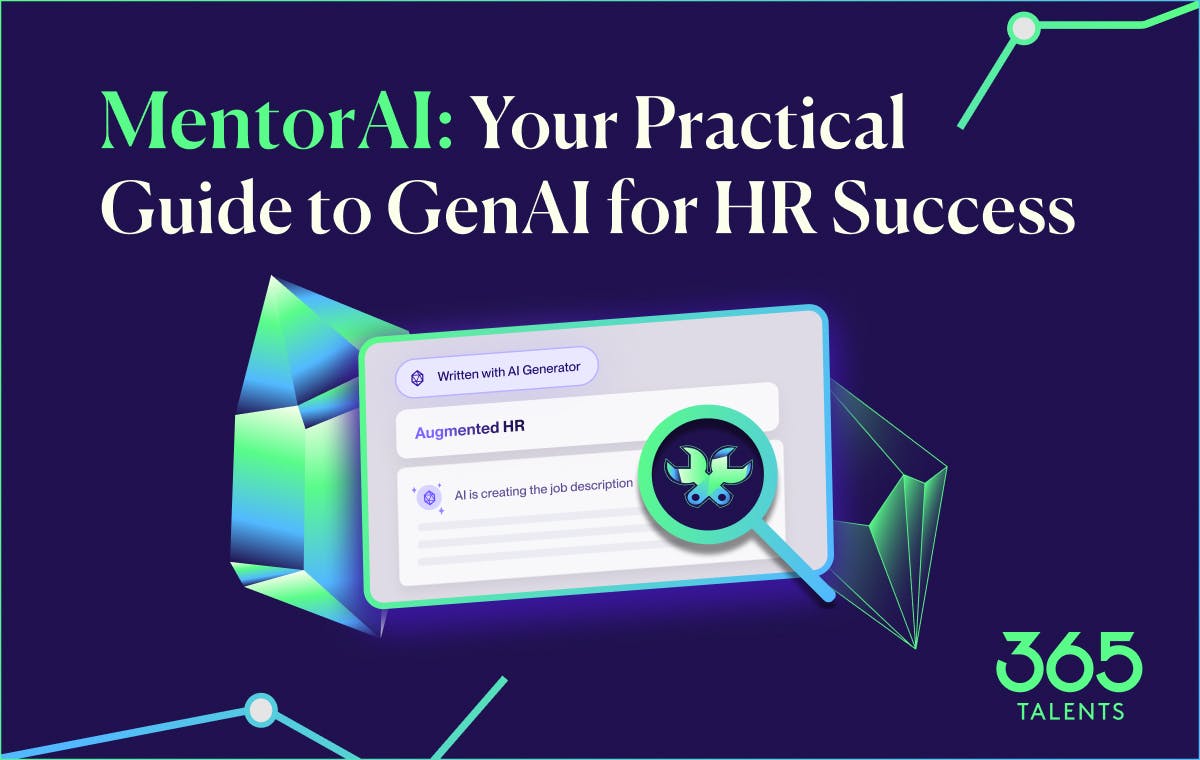
What about 365Talents?
At 365Talents, we place the utmost importance on data security and confidentiality. All information is stored and processed by the highest security standards, with robust access control measures, essential encryption management procedures, and a regularly updated security policy.
We are also committed to providing up-to-date information relevant to each company's context. By integrating 365Talents into your HR strategy, you'll benefit from advanced technology specifically designed for the challenges and opportunities of the HR field, surpassing the generic capabilities of generative AIs like ChatGPT.
What's more, unlike ChatGPT, 365Talents offers customized solutions that integrate seamlessly with existing HR processes, respecting each organization's cultural and operational specificities.
By combining the strengths of traditional and generative AI, 365Talents offers a robust platform that meets the dynamic needs of skills-driven organizations.
L’IA Générative en action chez 365Talents
At 365Talents, the integration of Generative AI translates into a set of tools carefully designed to improve human resources’ efficiency and analysis. These tools include:
These features enable you to create accurate job descriptions, identify emerging skills, and align employee skills with corporate objectives.
The Job Description Generator simplifies the creation of customized job descriptions, while the Job Benchmark offers dynamic comparative job analysis to adjust requirements to stay competitive.
Skills Vision offers customized action plans based on industry knowledge, enabling organizations to anticipate skills gaps and thrive in a constantly changing environment.













